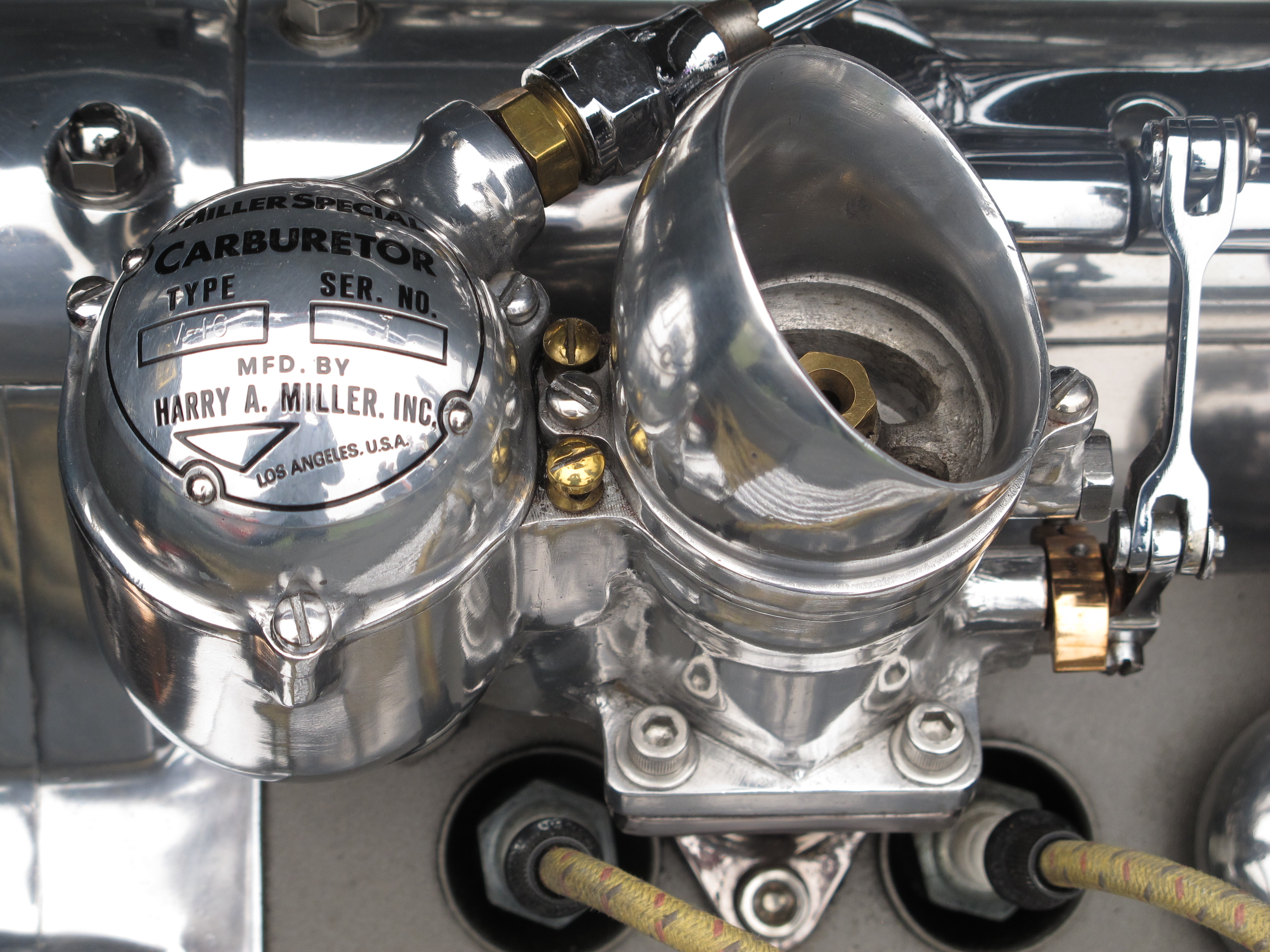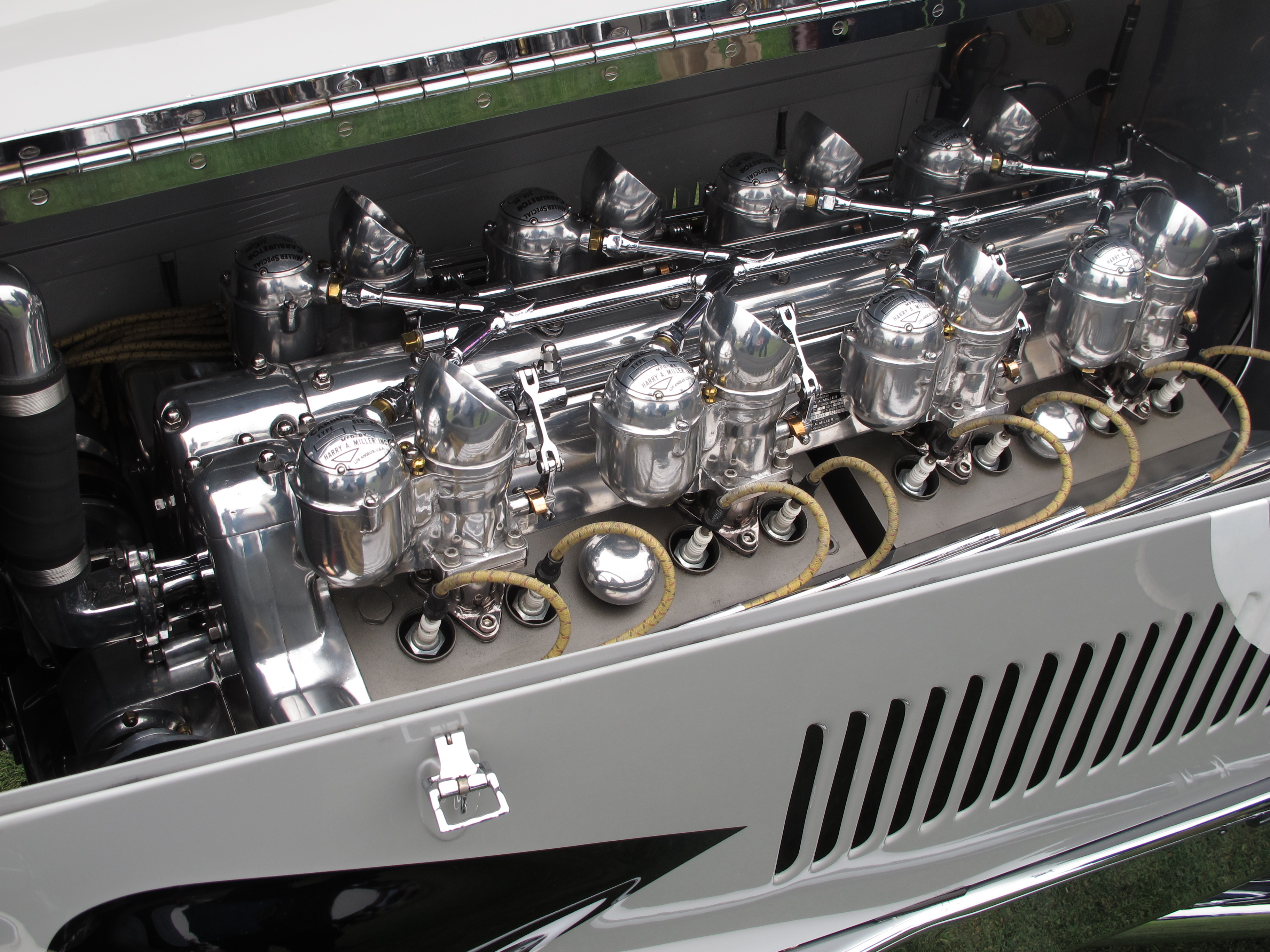Harry A. Miller on:
[Wikipedia]
[Google]
[Amazon]

 Harold Arminius Miller (December 9, 1875 – May 3, 1943), commonly called Harry, was an American race car designer and builder who was most active in the 1920s and 1930s. Griffith Borgeson called him "the greatest creative figure in the history of the American racing car". Cars built by Miller won the
Harold Arminius Miller (December 9, 1875 – May 3, 1943), commonly called Harry, was an American race car designer and builder who was most active in the 1920s and 1930s. Griffith Borgeson called him "the greatest creative figure in the history of the American racing car". Cars built by Miller won the
File:1925 Miller 122.JPG, 1925 Indianapolis front wheel drive racer
File:1925 Miller 122-2.JPG, 1925 Indianapolis front wheel drive racer
File:1924 Miller 122-183.JPG, 1924 Miller 122/183 "Convertible" (designed to be converted quickly from one engine to another) ran at 151.26 mph, at Muroc Dry Lake
Miller took some of the design elements from the Tucker Combat Car, notably the suspension, to
at the

 Harold Arminius Miller (December 9, 1875 – May 3, 1943), commonly called Harry, was an American race car designer and builder who was most active in the 1920s and 1930s. Griffith Borgeson called him "the greatest creative figure in the history of the American racing car". Cars built by Miller won the
Harold Arminius Miller (December 9, 1875 – May 3, 1943), commonly called Harry, was an American race car designer and builder who was most active in the 1920s and 1930s. Griffith Borgeson called him "the greatest creative figure in the history of the American racing car". Cars built by Miller won the Indianapolis 500
The Indianapolis 500, formally known as the Indianapolis 500-Mile Race, and commonly called the Indy 500, is an annual automobile race held at Indianapolis Motor Speedway (IMS) in Speedway, Indiana, United States, an enclave suburb of Indi ...
nine times, and other cars using his engines won three more. Millers accounted for 83% of the Indy 500 fields between 1923 and 1928.
Biography
Miller was born on December 9, 1875, inMenomonie, Wisconsin
Menomonie () is a city in and the county seat of Dunn County in the western part of the U.S. state of Wisconsin. The city's population was 16,843 as of the 2020 census.
Named for the original inhabitants of the area, the Menominee, the city ...
, to Jacob Miller (1833–1900) and Martha Ann (Tuttle) Miller (c1835–1922).
Miller's first work in the automotive business was with the short-lived Yale Automobile Company. From Yale he moved to Lansing, Michigan, to work for motoring pioneer Ransom E. Olds
Ransom Eli Olds (June 3, 1864 – August 26, 1950) was a pioneer of the American automotive industry, after whom the Oldsmobile and REO brands were named. He claimed to have built his first steam car as early as 1887 and his first gasoline-power ...
at Oldsmobile
Oldsmobile or formally the Oldsmobile Division of General Motors was a brand of American automobiles, produced for most of its existence by General Motors. Originally established as "Olds Motor Vehicle Company" by Ransom E. Olds in 1897, it pro ...
, where he was employed as a race mechanic during the early Vanderbilt cup races. After a poor 1906 race season, Miller left for Los Angeles, California
Los Angeles ( ; es, Los Ángeles, link=no , ), often referred to by its initials L.A., is the largest city in the state of California and the second most populous city in the United States after New York City, as well as one of the world' ...
, to open a small machine shop specializing in carburetor production.
Among Miller's innovations include perhaps the first engine mounted on a bicycle and the first outboard motor. Miller built a 4 cylinder engine and mounted it on a boat. His neighbor, Ole Evinrude
Ole Evinrude, born Ole Andreassen Aaslundeie (April 19, 1877 – July 12, 1934) was an American entrepreneur, known for the invention of the first outboard motor with practical commercial application.
Biography
Ole Evinrude was born in Hun ...
, removed two cylinders and patented the first outboard motor. Miller also produced the first aluminum pistons, developed the aluminum alloys still used in engine development today, and the first carburetors and induction system to use Helmholtz resonators.
His involvement with the racing side of his carburetor business led first to repairing and then building race cars. In the 1910s, Miller was making $1 million per year through sales of his carburetors. In the early 1920s, he built his own 3.0 litre (183 in³) engine. Inspired by multiple engine designs including Duesenberg and Peugeot
Peugeot (, , ) is a French brand of automobiles owned by Stellantis.
The family business that preceded the current Peugeot companies was founded in 1810, with a steel foundry that soon started making hand tools and kitchen equipment, and the ...
engines which had been serviced in his shop, it had 4 cylinders, dual overhead camshafts and 4 valves per cylinder. Tommy Milton supplied the financial backing to produce this engine but it was Jimmy Murphy who first won with it. It powered Jimmy Murphy's Duesenberg to victory in the 1922 Indianapolis 500. Miller then progressed to making Miller single-seater race cars that used supercharged versions of his 2.0 and 1.5 liter (122 and 91 in³) engines. The engines took four more wins in the 500 up to 1929, twice (1926 and 1928) in Miller chassis, and won the race another seven times between 1929 and 1938 (twice again, in 1930 and 1932, in Miller chassis).
In the 1920s and 1930s, Miller engines also powered speedboats to several race wins and world water speed records. Among those that won with his engines on the water was the great Gar Wood
Garfield Arthur "Gar" Wood (December 4, 1880 – June 19, 1971) was an American inventor, entrepreneur, and championship motorboat builder and racer who held the world water speed record on several occasions. He was the first man to trave ...
.
Miller declared bankruptcy in 1933. His shop foreman and chief machinist Fred Offenhauser purchased the business and continued development of the engine as the Offenhauser which raced successfully until the 1980s.
After bankruptcy, Miller built race cars with Indianapolis 500 enthusiast Preston Tucker
Preston Thomas Tucker (21 September 1903 – 26 December 1956) was an American automobile entrepreneur.
He is most remembered for his Tucker 48 sedan, initially nicknamed the "Tucker Torpedo", an automobile which introduced many features ...
, and in 1935 they formed Miller and Tucker, Inc., whose first job was to build ten modified Ford V-8 racers for Henry Ford
Henry Ford (July 30, 1863 – April 7, 1947) was an American industrialist, business magnate, founder of the Ford Motor Company, and chief developer of the assembly line technique of mass production. By creating the first automobile that ...
. With insufficient time available for their development and testing, all these cars dropped out when the steering boxes, installed too close to the exhaust, overheated and locked up. The design was later perfected by privateer
A privateer is a private person or ship that engages in maritime warfare under a commission of war. Since robbery under arms was a common aspect of seaborne trade, until the early 19th century all merchant ships carried arms. A sovereign or deleg ...
s, and examples ran at Indianapolis through 1948.
Miller and Tucker, Inc., moved to Indianapolis and continued race car development and construction. In the late 1930s, Miller and Tucker also developed the Tucker Combat Car and tried unsuccessfully to sell it to the Dutch and U.S. governments. The car was capable of on pavement and on rough terrain, and had several innovative features including a power-operated gun turret, which the U.S. government bought and used in numerous applications including the B-17
The Boeing B-17 Flying Fortress is a four-engined heavy bomber developed in the 1930s for the United States Army Air Corps (USAAC). Relatively fast and high-flying for a bomber of its era, the B-17 was used primarily in the European Theater ...
and B-29, PT boat
A PT boat (short for patrol torpedo boat) was a motor torpedo boat used by the United States Navy in World War II. It was small, fast, and inexpensive to build, valued for its maneuverability and speed but hampered at the beginning of the war ...
s, and landing craft.
American Bantam
The American Bantam Car Company was an American automobile manufacturing company incorporated in the state of Pennsylvania. American Bantam is credited with the invention of the Original Jeep in 1940. The company's founders, Roy Evans and Willia ...
, where he was involved with the development of the first Jeep.
Tucker and Miller worked together off and on until Miller's death in 1943. Tucker helped Miller's widow pay the funeral costs. It was while working with Miller that Tucker had met chief mechanic John Eddie Offutt, who would later help him develop and build the first prototype of the 1948 Tucker Sedan
The Tucker 48, commonly referred to as the Tucker Torpedo, was an automobile conceived by Preston Tucker while in Ypsilanti, Michigan and briefly produced in Chicago, Illinois in 1948. Only 51 cars were made including their prototype before the ...
.
Miller died on May 3, 1943, at Grace Hospital in Detroit, Michigan
Detroit ( , ; , ) is the largest city in the U.S. state of Michigan. It is also the largest U.S. city on the United States–Canada border, and the seat of government of Wayne County. The City of Detroit had a population of 639,111 at ...
, at age 67.
Awards
* He was named to the National Sprint Car Hall of Fame in 1990. * He was inducted into theMotorsports Hall of Fame of America
The Motorsports Hall of Fame of America (MSHFA) is hall of fame that honors motorsports competitors and contributors from the United States from all disciplines, with categories for Open Wheel, Stock Cars, Powerboats, Drag Racing, Motorcycles, ...
Harry Millerat the
Motorsports Hall of Fame of America
The Motorsports Hall of Fame of America (MSHFA) is hall of fame that honors motorsports competitors and contributors from the United States from all disciplines, with categories for Open Wheel, Stock Cars, Powerboats, Drag Racing, Motorcycles, ...
in 1999.
* He was inducted into the Automotive Hall of Fame
The Automotive Hall of Fame is an American museum. It was founded in 1939 and has over 800 worldwide honorees. It is part of the MotorCities National Heritage Area. the Automotive Hall of Fame includes persons who have contributed greatly to a ...
in 2003.
Tribute
Miller was honored at the 1993 Monterey Historic Automobile RacesReferences
Further reading
* Mark L. Dees, ''The Miller Dynasty: A Technical History of the Work of Harry A. Miller, His Associates, and His Successors'' (Barnes, Scarsdale, 1981; second edition Hippodrome, Moorpark, 1994) This is the definitive work on Miller * Griffith Borgeson, ''Miller'' (Motorbooks International, Osceola, 1993) * Griffith Borgeson, ''The Last Great Miller: The Four-Wheel-Drive Indy Car'' ( SAE, Warrendale, 2000). This car was built with sponsorship from the Four Wheel Drive Company of Clintonville, Wisconsin. * Griffith Borgeson, ''The Golden Age of the American Racing Car'' (Bonanza, New York, 1966; second edition SAE, Warrendale, 1998) * Gordon Eliot White, "The Marvelous Mechanical Designs of Harry A. Miller" (Iconografix, Hudson, Wisconsin, 2004).External links
* * * {{DEFAULTSORT:Miller, Henry Arminius 1875 births 1943 deaths Indianapolis 500 National Sprint Car Hall of Fame inductees American racecar constructors American automotive engineers People from Menomonie, Wisconsin